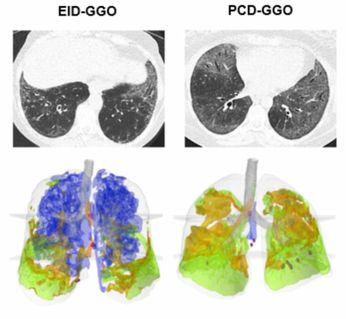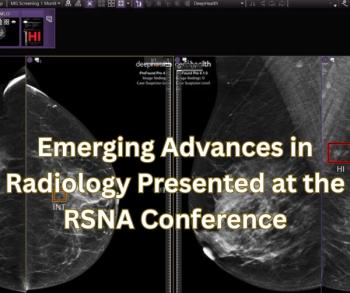New research suggests that pre-operative contrast-enhanced mammography (CEM) provides a high degree of accuracy in determining pathologic nipple involvement for women undergoing surgery for breast cancer.
For the retrospective multicenter study, recently published in Radiology, researchers reviewed preoperative CEM data for 530 women (median age of 63.7) who had surgery for biopsy-proven breast cancer (total of 558 breast cancers). The study authors noted 147 cases of pathologic nipple involvement in the cohort.
For patients with pathologic nipple involvement, the researchers found that pre-op CEM offered:
• a 95 percent specificity rate;
• 83.5 percent positive predictive value (PPV); and
• a positive likelihood ratio of 14.1.
“ … Our results show that preoperative CEM, with its ability to rule in patients with nipple involvement confirmed by a 14.1 positive likelihood ratio, can preclude attempts at nipple-sparing surgeries that would then require the transition to more aggressive surgery, allowing planning of other surgical approaches during the preoperative phase rather than in the time-constrained intraoperative setting,” wrote lead study author Andrea Cozzi, M.D., Ph.D., who is affiliated with the Imaging Institute of Southern Switzerland in Lugano, Switzerland, and colleagues.
The study authors noted that periareolar skin thickening occurred on recombined images in 68.7 percent and on low-energy images in 61.2 percent of women with pathologic nipple involvement. Periareolar skin thickening on CEM had a 3.8-fold higher likelihood in women with pathologic nipple involvement, according to the researchers.
The researchers pointed out that other CEM features like superficial linear enhancement and nipple retraction provided a three-fold and 2.20-fold higher likelihood, respectively, for pathologic nipple involvement.
Three Key Takeaways
• High diagnostic accuracy. Preoperative contrast-enhanced mammography (CEM) demonstrated 95 percent specificity and an 83.5 percent positive predictive value for detecting pathologic nipple involvement in women undergoing breast cancer surgery.
• Surgical planning impact. With a positive likelihood ratio of 14.1, CEM can help reliably identify patients unsuitable for nipple-sparing surgery, enabling better preoperative planning and avoidance of intraoperative surgical changes.
• Comparable to MRI performance. CEM specificity in assessing nipple involvement is similar to that of breast MRI, supporting its potential role as a practical, accessible alternative for preoperative evaluation.
Additionally, the study authors said the overall specificity of CEM is comparable to that of breast MRI.
“The current 95.1% CEM specificity is in line with the reported MRI specificities of 94%, 97%, and 83% for evaluating the presence of enhancement continuity to the nipple-areolar complex, unilateral nipple-areolar complex enhancement, and the presence of non-mass enhancement, respectively,” noted Cozzi and colleagues.
(Editor’s note: For related content, see “Can Contrast-Enhanced Mammography be a Viable Screening Alternative to Breast MRI?,” “Contrast-Enhanced Mammography and High-Concentration ICM Dosing: What a New Study Reveals” and “Abbreviated MRI and Contrast-Enhanced Mammography Provide Fourfold Higher Cancer Detection than Breast Ultrasound.”)
In regard to study limitations, the authors acknowledged the lack of assessment for intra- and interobserver reliability, a lack of direct comparison between CEM and MRI, and the exclusion of patients on neoadjuvant therapy.





























